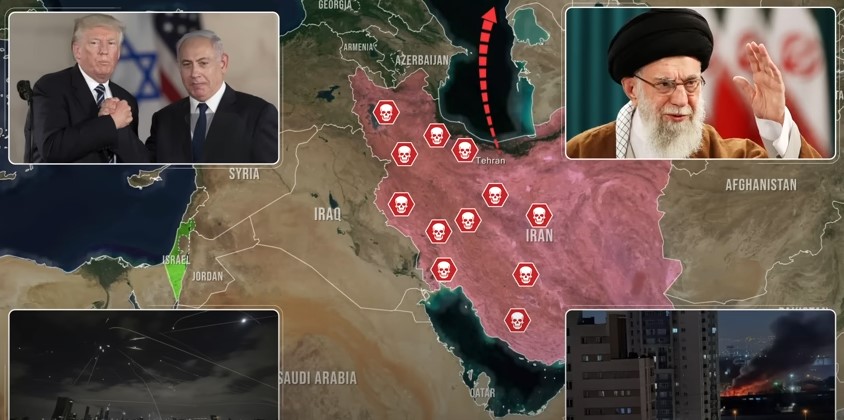Today, there are interesting updates from the Middle East. Here, in a war Tehran once promised would reshape the region, the only thing reshaped is Iran’s own military, flattened, blinded, and humiliated in a matter of days.
Israeli F-35s own the skies above Tehran
In the opening hours of the Israeli operation against Iran, it became immediately clear that Iran’s air defense network was utterly insufficient to repel an attack from a modern and well-prepared adversary.

Iran’s regime claimed to have downed four such jets, yet the evidence provided was quickly debunked as embarrassingly obvious Photoshop manipulations. In reality, Israeli aircraft rapidly dominated western Iranian airspace, freely operating even over Tehran itself, an unprecedented humiliation.
The Iranian Air Force was also quickly neutralized with Israeli planes striking Iranian jets directly on their runways and systematically targeting radar installations, leaving Iran’s air force unable to respond or put up resistance against Israeli airpower.
Scorched before fired
Following this crippling operation, Iran attempted to retaliate with ballistic missiles.

However, even this modest success was short-lived. On the second day of the operation, Israeli aircraft rapidly identified and destroyed approximately one-third of Iran’s missile launchers, dramatically reducing the volume of subsequent missile attacks.
Iran’s missile arsenal is buried in two days
Further worsening Iran’s trouble, Israel took swift and decisive action to neutralize Iran’s vaunted underground missile stockpiles.
Consequently, despite the vast stores of missiles presumably remaining intact underground, Iran now lacks timely access to these weapons, rendering them irrelevant to the current conflict.
Iran’s drones meet the Iron Dome wall
Iran’s widely touted Shahed drones, famous for their use by Russia against Ukraine, proved astonishingly ineffective against Israeli defenses.

Israel’s dense and layered air defense network, featuring the Iron Dome supplemented by advanced missile defenses, fighter cover, and helicopter support, intercepted these drones with ease.
Moreover, American and Jordanian support further bolstered Israeli defenses. Israeli electronic warfare experts had previously studied Shahed drones extensively, even deploying to Ukraine for hands-on experience in 2023. As a result, Iranian drone assaults were swiftly neutralized long before even reaching Israel.
20 Iranian generals gone before sunrise
The Israeli operation also delivered a devastating blow to Iranian military leadership: over 20 high-ranking commanders, including senior officers of the Iranian armed forces and the elite Iranian Revolutionary Guard Corps, were killed within the first hours.
Israel then meticulously targeted and eliminated their replacements as soon as they were appointed, paralyzing Iran’s ability to respond effectively.

Iran’s regime teeters between collapse and surrender
Facing catastrophic losses and a rapidly deteriorating strategic position, Iran’s regime quickly spiraled into panic mode.
Tehran’s statements that they are ready to stop the attacks after Israel stops indicate not just willingness but a call to resume negotiations, proposing a mutual ceasefire.

Tehran’s leaders recognize that while escalating further might inflict limited additional damage upon Israel, it would also prompt devastating counterstrikes capable of collapsing their regime.
Tehran fights to avoid its fall
Yet, the regime must also demonstrate some military resolve domestically, or risk losing its internal legitimacy entirely, a scenario equally threatening to its grip on power.

The US initially signaled openness to renewed diplomacy, but President Trump subsequently hardened his stance, explicitly rejecting any further negotiations with Iran.
In our regular frontline report, we pair up with the military blogger Reporting from Ukraine to keep you informed about what is happening on the battlefield in the Russo-Ukrainian war.




